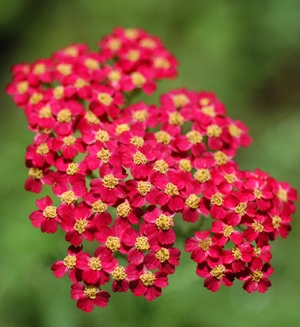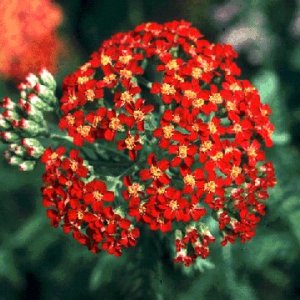Achillea millefolium 'Paprika'
Common: yarrowAchillea millefolium 'Paprika' - 72 per flat
- Height: 2'-3'
- Spread: 2'-4'
- Spacing: 12"
- Hardiness Zone(s): 3-8


Achillea millefolium 'Paprika' - 72 per flat

Intense red flowers surround bright yellow centers. This Achillea is a vigorous grower that will quickly form a dense weed-blocking mat. It is one of the most floriferous of the Achillea cultivars, presenting a solid block of red in early summer. An easy and rewarding production plant, it has very few pest or pathogen problems.
Full sun to light shade in average, moist or dry soils. Tolerates sand or clay, but not wet feet. Very easy to grow and drought tolerant once established. Fast propagation can be achieved with cuttings taken in mid-summer. Clumps of mature plants should be divided every 3-4 years.
"This species was cultivated in Europe before 1440, used as a remedy for toothache, and mixed in ale in place of hops to increase the inebriating quality of the drink. It was thought to have a magical quality similar to our "apple a day keeps the doctor away," and was said to grow in churchyards as a reproach to the dead, "who need never have come there if they had taken their yarrow broth faithfully every day while living." The main use, however, was that of an herb to heal wounds. The genus was named after Achilles, who is said to have used A. millefollium to staunch the wounds of his soldiers. Soldier's Woundweed and Carpenter's Weed are other old English names." - Allan Armitage
Striking in butterfly or flower gardens, with fragrant foliage and vibrant flowers that age gracefully to light pink, then to creamy yellow. Beautiful in both formal and informal gardens. Superb cut flower, fresh or dried. Tolerant of dry, poor soils. - Darwin Perennials